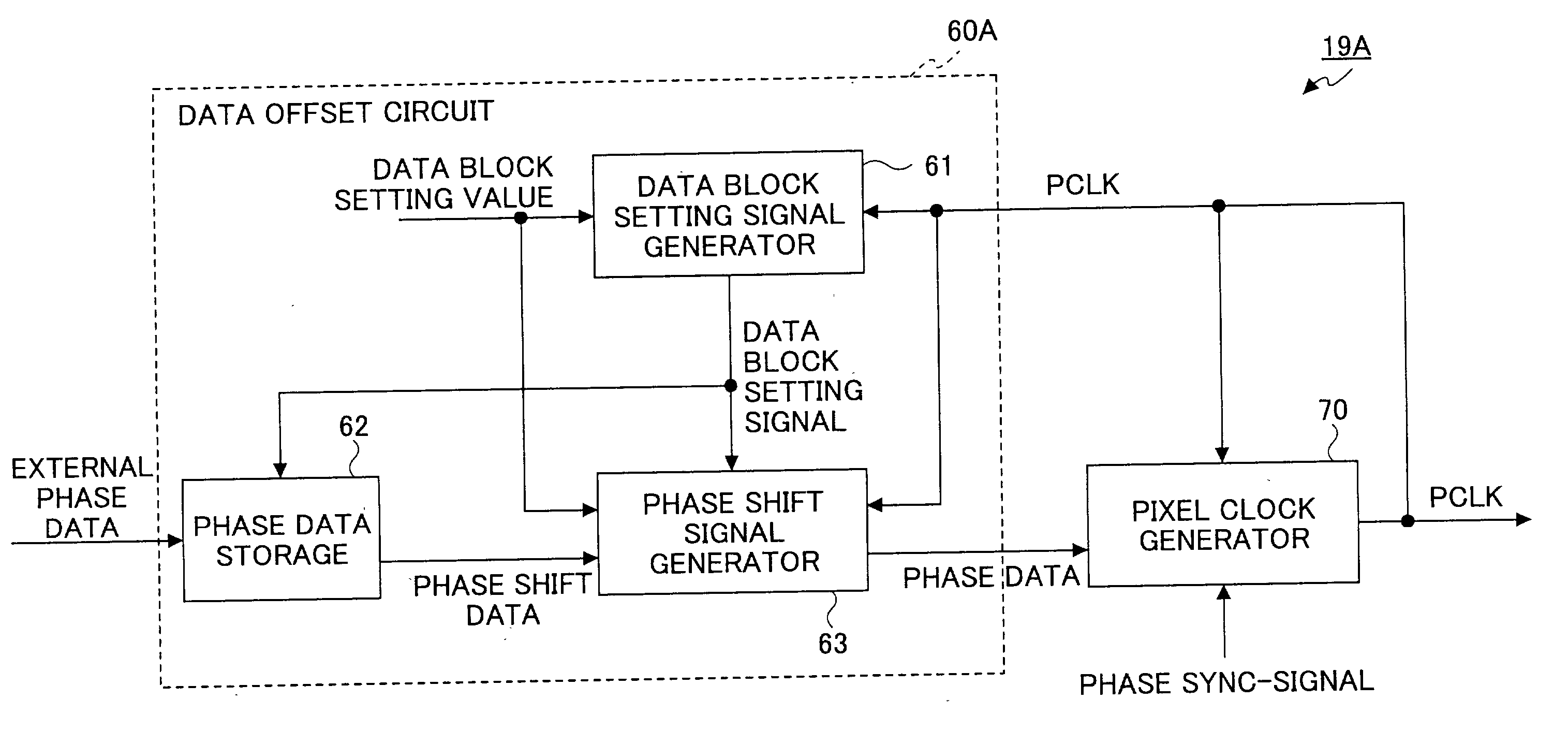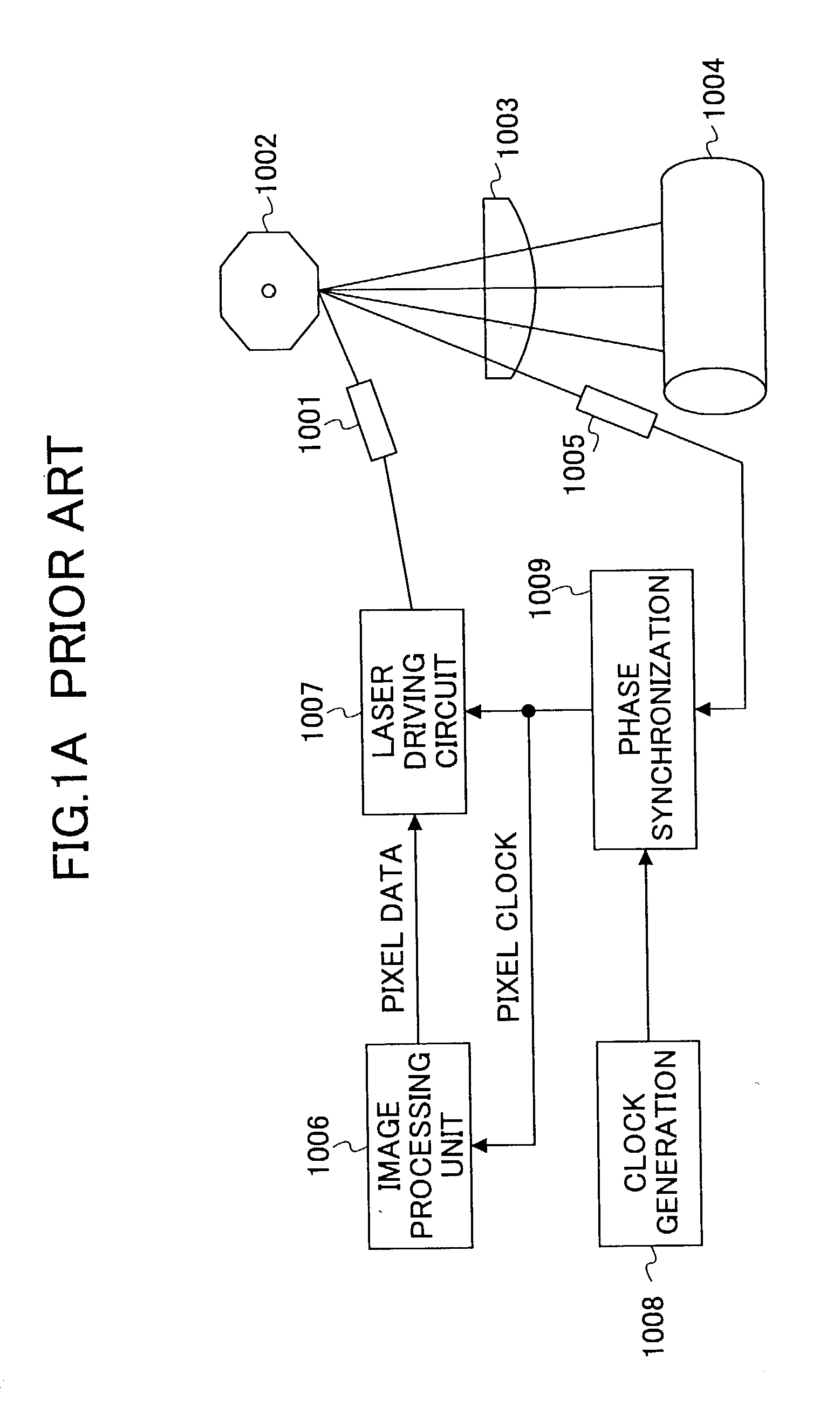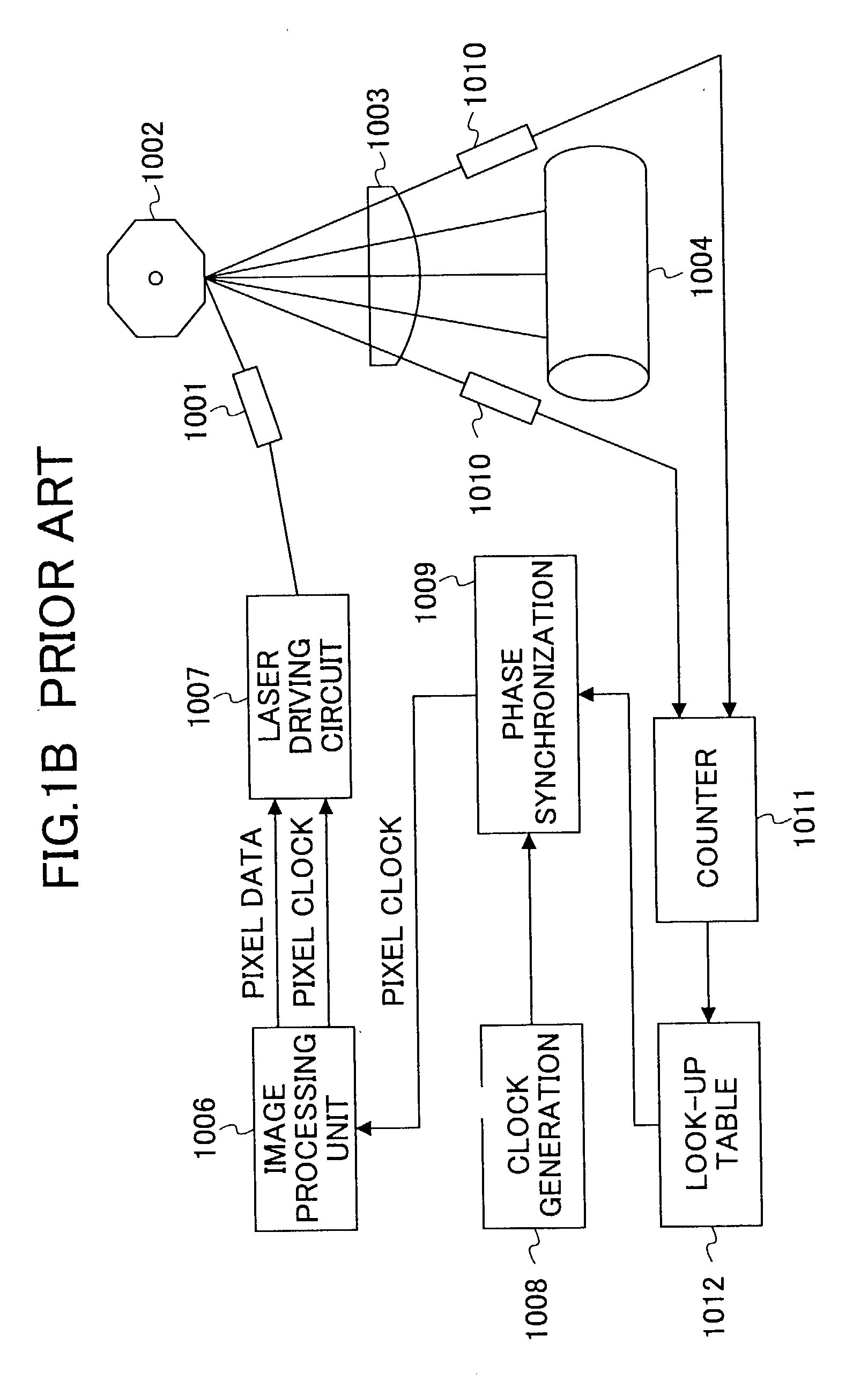Pixel clock generating apparatus, optical writing apparatus using a pixel clock, imaging apparatus, and method for generating pixel clocks
a technology of generating apparatus and generating apparatus, which is applied in the direction of inking apparatus, visual presentation using printers, instruments, etc., can solve the problems of image quality degradation, image fluctuation, and image quality decline, and achieve the effect of reducing the adverse influence of light flux
- Summary
- Abstract
- Description
- Claims
- Application Information
AI Technical Summary
Benefits of technology
Problems solved by technology
Method used
Image
Examples
third embodiment
[0141] FIG. 16 illustrates a pixel clock generating unit 19C used in the optical writing apparatus 15 according to the invention. The same elements as those shown in FIG. 3 and FIG. 9 are denoted by the same numerical references, and explanation for them will be omitted. The pixel clock generating unit 19C comprises a pixel clock generator 70, and a data offset circuit 60C that defines multiple data blocks in the effective writing range and supplies appropriate phase data to the pixel clock generator 70. The pixel clock generator 70 has the same structure as that shown in FIG. 4A or FIG. 4B. The data offset circuit 60C includes a data block setting signal generator 61, a phase data storage 62, a phase shift signal generator 63, and a data block setting period signal generator 64. The data block setting period signal generator 64 generates a data block setting period signal based on the externally supplied data block setting value that defines the number of pixel clocks contained in ...
sixth embodiment
[0194] The dot offset detector / controller 110 produces second phase data for dynamic correction, in addition to first phase data for static correction. The first phase data is used repeatedly every line to correct dot offset due to statistic factors, such as the lens characteristic of the scanning lens. The second phase data is used to correct dot offset due to dynamic factors, such as fluctuation in rotational speed of the polygonal mirror that changes each line. In this case, the pixel clock generator 120 has a phase data composite circuit (not shown) to synthesize the first and second phase data. If the multi-beam light source structure described in the sixth embodiment is applied to the optical writing apparatus shown in FIG. 30, then multiple pairs of detectors 101 and 102 are furnished so as to simultaneously produce phase data for multiple lines corresponding to the respective light sources.
[0195] The pixel clock generator 120 generates a pixel clock based on the phase data s...
seventh embodiment
[0203] To overcome this problem, in the seventh embodiment, characteristic values representing the relation between the actual image height and the ideal image height of the optical scanning system in use are determined in advance by preliminary experiment or simulation to create a lookup table. The optical scanning time is successively measured during the actual printing operation using the optical writing apparatus. A correction amount required for correcting dot offset is obtained from the lookup table based on the measured scanning time, and appropriate phase shift amount is determined so that the dot position approaches the ideal position. With this arrangement, dot offset in the main scanning direction due to the environmental changes in the apparatus can be effectively corrected.
PUM
 Login to View More
Login to View More Abstract
Description
Claims
Application Information
 Login to View More
Login to View More - R&D
- Intellectual Property
- Life Sciences
- Materials
- Tech Scout
- Unparalleled Data Quality
- Higher Quality Content
- 60% Fewer Hallucinations
Browse by: Latest US Patents, China's latest patents, Technical Efficacy Thesaurus, Application Domain, Technology Topic, Popular Technical Reports.
© 2025 PatSnap. All rights reserved.Legal|Privacy policy|Modern Slavery Act Transparency Statement|Sitemap|About US| Contact US: help@patsnap.com



